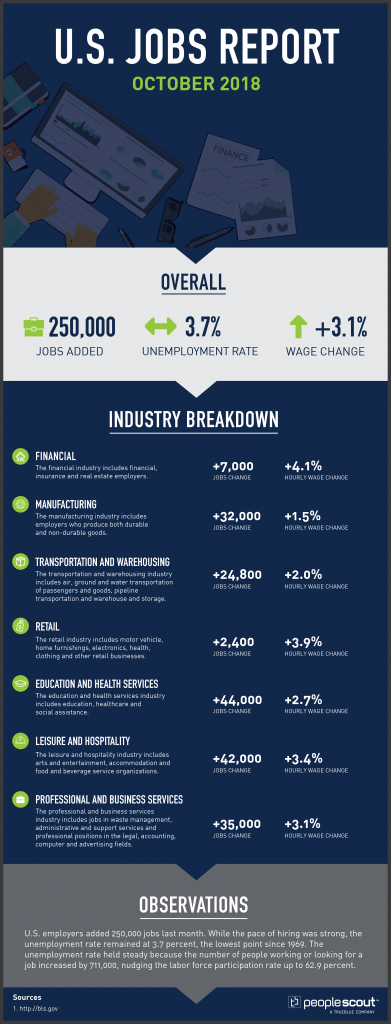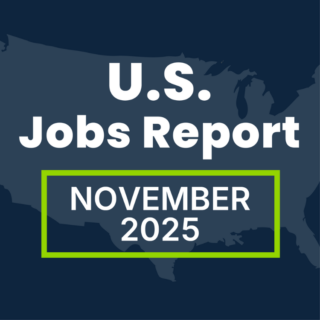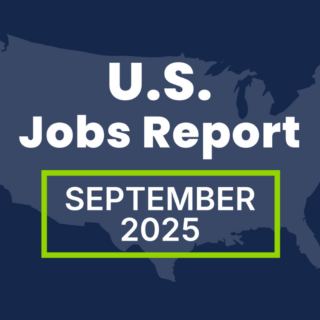
The Labor Department released its October jobs report which shows 250,000 jobs added to the U.S. economy. The pace of hiring was strong, and the unemployment rate remained at 3.7 percent, the lowest point since 1969. The unemployment rate held steady because the number of people working or looking for a job increased by 711,000, nudging the labor force participation rate up to 62.9 percent, from 62.7 percent a month earlier. U.S. employers have added to payrolls for 97 straight months, extending the longest continuous jobs expansion on record.
The Numbers
250,000: The economy added 250,000 jobs in October.
3.7%: The unemployment remained to 3.7 percent.
3.1%: Wages increased 3.1 percent over the last year.
The Good
Wage growth climbed 3.1 percent from one year ago, on an hourly basis, exceeding 3 percent for the first time since the recession. On a weekly basis, wages grew at an even stronger rate at 3.4 percent. The economy has added 2.1 million jobs so far in 2018, which puts it on track to be the third best year for job growth since the recession. This year is 89,000 jobs behind the pace of 2015 and 322,000 jobs behind the pace of 2014. The overall increase in those participating in the labor pool is an indicator of the continuing strength of the job market.
For those ages 25 to 54, 82.3 percent are participating in the labor force and 79.7 percent have jobs. Both figures are now at their highest levels since the recession and its immediate aftermath. The biggest sectors for job growth continued to be professional services and health care, and the construction and manufacturing industries have also had solid gains over the last year.
The Bad
Not everyone is reaping the same benefits from the strong job market. The unemployment rate for workers with high school education or less climbed in October. Workers without a high school degree face triple the unemployment rate of those who finished college. Education level is not the only determining factor, as Bloomberg reports:
“Ten years after the Great Recession, 25- to 34-year-old men are lagging in the workforce more than any other age and gender demographics. About 500,000 more would be punching the clock today had their employment rate returned to pre-downturn levels. Many… say they’re in training. Others report disability. All are missing out on a hot labor market and crucial years on the job, ones traditionally filled with the promotions and raises that build the foundation for a career.”
The Unknown
With unemployment at record lows, a critical question is how many of those still on the sitting on the sidelines outside of the labor force can be coaxed back in to fill the current and future open positions. Commenting on the strong job statistics for 25- to 54-year-olds noted above, Neil Irwin in the New York Times writes:
“The proportion of prime-working-age adults — those between 25 and 54 — who were working in October soared to 79.7 percent, up from 79.3 percent in September and easily the highest of this expansion.
Strikingly, though, there is still room to run on this measure compared with the last two economic peaks. That figure was 80.3 percent in January 2007 and 81.9 percent in April 2000.
Does the economy still have the potential to reach those levels, or reach still higher ones? If so, there’s no reason this kind of job growth can’t continue for at least a few more years.
If, on the other hand, some of those who have left the labor force won’t be pulled in no matter what, the economy will be hitting a simple constraint of not having enough workers — all the more so given more stringent policies limiting immigration.
So celebrate the latest jobs numbers, while hoping that this proves to be the middle of a nice boom rather than the beginning of the end.”



